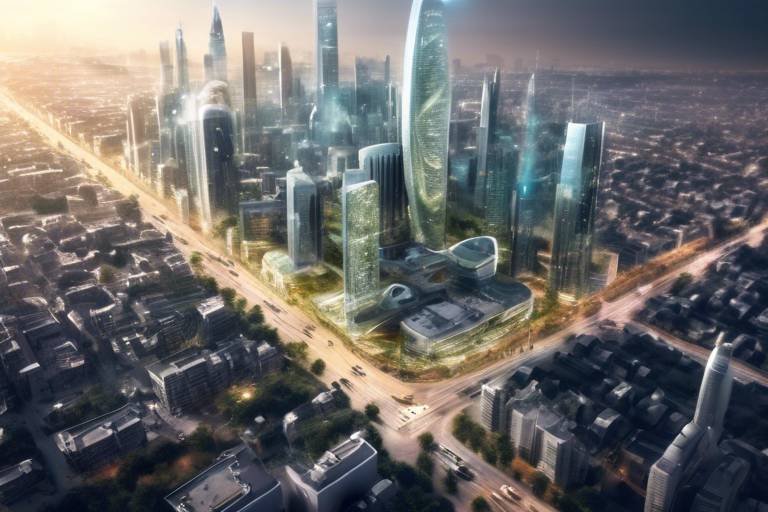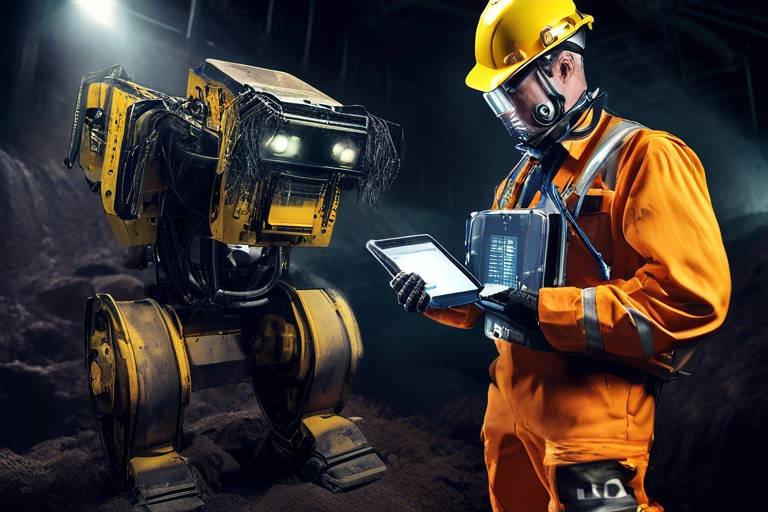The Future of Smart City Development
The concept of smart cities is not just a buzzword; it's a transformative vision for urban living that integrates technology, sustainability, and community engagement. As cities around the globe continue to grow, the challenges of urbanization become increasingly complex. Issues such as traffic congestion, pollution, and resource management require innovative solutions that can only be achieved through the adoption of smart technologies. The future of smart city development hinges on harnessing the power of data, connectivity, and emerging technologies to create environments that are not only efficient but also livable and sustainable.
Imagine a city where traffic flows smoothly, public services are efficient, and the quality of life for residents is at an all-time high. This is the promise of smart city development. With the integration of the Internet of Things (IoT), artificial intelligence (AI), and big data analytics, urban planners and city officials can make informed decisions that enhance the overall functionality of urban spaces. These technologies allow for real-time monitoring of city infrastructure, enabling quick responses to issues as they arise. For instance, smart traffic lights can adapt to real-time traffic conditions, reducing congestion and improving air quality, which is a win-win for both residents and the environment.
Moreover, the role of sustainability in smart city initiatives cannot be overstated. As we face the realities of climate change, cities are stepping up to become leaders in sustainable practices. This includes the adoption of renewable energy sources, efficient waste management systems, and green building practices. The goal is to create a harmonious relationship between urban development and the natural environment, ensuring that future generations inherit cities that are not only technologically advanced but also ecologically sound.
In this evolving landscape, the importance of community engagement becomes clear. Smart cities are not just about technology; they are about people. Engaging citizens through digital platforms fosters a sense of belonging and encourages active participation in local governance. When residents feel empowered to voice their opinions and contribute to decision-making processes, cities can tailor their services to meet the unique needs of their communities.
However, with the rise of smart city technologies comes the critical need to address privacy and security concerns. As cities collect vast amounts of data, ensuring the safety and security of this information is paramount. Citizens must trust that their personal information is protected, and that surveillance measures are in place for their safety, not for invasive monitoring. Balancing the benefits of smart technologies with ethical considerations will be a defining challenge for urban planners in the years to come.
In conclusion, the future of smart city development is bright, filled with opportunities to enhance urban living through innovative technologies and sustainable practices. By prioritizing connectivity, sustainability, and community engagement, cities can transform into vibrant ecosystems that not only meet the needs of their residents today but also pave the way for a better tomorrow.
- What are smart cities? Smart cities utilize technology and data to improve urban services and enhance the quality of life for residents.
- How do smart technologies improve urban living? They enhance efficiency in transportation, public services, and resource management, leading to reduced congestion and better environmental quality.
- What role does sustainability play in smart city development? Sustainability is central to smart city initiatives, focusing on eco-friendly practices and renewable energy to create livable environments.
- How can citizens engage in smart city initiatives? Through digital platforms and community programs, citizens can participate in local governance and influence urban planning decisions.
- What are the privacy concerns associated with smart cities? The collection of personal data raises concerns about surveillance and data security, necessitating robust measures to protect citizen privacy.
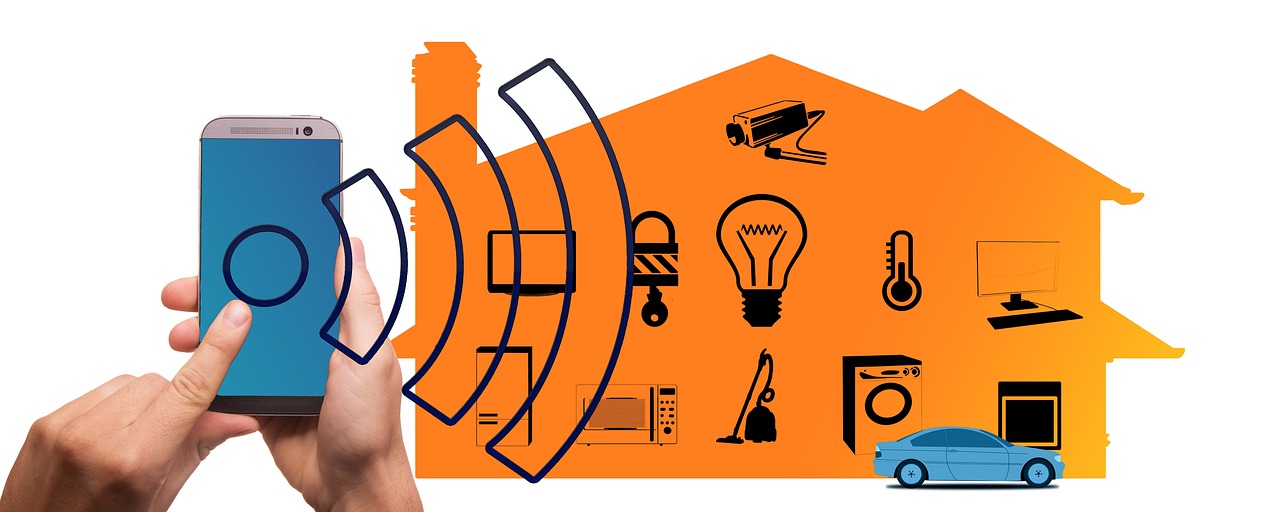
Emerging Technologies in Smart Cities
As we step into the future, the concept of smart cities is not just a buzzword; it's becoming a reality, driven by a wave of emerging technologies that are reshaping urban landscapes. Imagine a city where everything is interconnected, where your morning commute is seamless, and where resources are optimized for efficiency and sustainability. This vision is powered by technologies like the Internet of Things (IoT), Artificial Intelligence (AI), and big data analytics, which together create an ecosystem that enhances the quality of life for residents.
The IoT serves as the backbone of smart cities, connecting a myriad of devices and sensors that collect and transmit data in real-time. Picture streetlights that adjust their brightness based on pedestrian activity or waste bins that signal when they need to be emptied. These innovations not only streamline city operations but also contribute to energy conservation and reduced operational costs. For instance, a recent study revealed that cities implementing IoT solutions saw a 30% reduction in energy consumption across various sectors.
AI plays a crucial role in analyzing the vast amounts of data generated by IoT devices. By leveraging machine learning algorithms, cities can predict traffic patterns, optimize public transport schedules, and even enhance emergency response times. Think of AI as the brain of a smart city, processing information and making decisions that improve urban living. For example, cities utilizing AI-driven traffic management systems have reported a significant decrease in congestion, leading to shorter commute times and lower emissions.
Furthermore, big data analytics enables urban planners to make informed decisions based on real-time insights. This technology allows for the identification of trends and patterns that were previously invisible, providing a clearer picture of how cities function. By understanding these dynamics, city officials can allocate resources more effectively, ensuring that services are tailored to the specific needs of the community. For instance, analyzing data from public health sources can help identify areas in need of medical services or recreational facilities, fostering a healthier urban environment.
However, with great power comes great responsibility. The integration of these technologies raises important questions about privacy and security. As cities become more interconnected, the potential for data breaches and misuse increases. It is essential for urban planners and technology developers to establish robust frameworks that protect citizens' data while still reaping the benefits of smart technologies. A balanced approach that prioritizes transparency and public trust will be critical in building smart cities that truly serve their residents.
In summary, the emergence of IoT, AI, and big data is revolutionizing urban infrastructure and management. These technologies not only enhance efficiency but also significantly improve the quality of life for city dwellers. As we continue to embrace these innovations, the future of smart cities looks bright, promising a more connected, sustainable, and livable urban experience.

Sustainable Urban Planning
Sustainable urban planning is not just a buzzword; it’s a vital approach to creating cities that can thrive in harmony with nature. As urban populations continue to swell, the need for eco-friendly practices becomes increasingly critical. Imagine a city where every building breathes, where parks are as common as parking lots, and where renewable energy flows through the streets like a lifeline. This vision is becoming a reality through innovative planning that prioritizes sustainability at its core.
At the heart of sustainable urban planning is the idea of eco-friendly practices. This means designing urban spaces that minimize environmental impact while maximizing quality of life for residents. Think about it: what if every neighborhood had access to green spaces, fresh air, and clean water? By focusing on renewable energy sources and efficient resource management, cities can create livable environments that not only meet the needs of today but also safeguard the future for generations to come.
One of the most exciting aspects of sustainable urban planning is the integration of green infrastructure. This involves incorporating natural elements into the urban landscape, which can promote biodiversity and improve air quality. For instance, cities are increasingly recognizing the value of parks, green roofs, and urban forests. These spaces not only enhance the aesthetic appeal of urban areas but also provide essential habitats for wildlife. In fact, studies have shown that cities with more green spaces experience lower temperatures and better air quality, making them healthier places to live.
Integrating green infrastructure is a game-changer. It’s like giving cities a natural facelift. By using eco-friendly materials and designs, urban planners can create spaces that are both functional and beautiful. For example, permeable pavement allows rainwater to seep through, reducing runoff and minimizing flooding. Additionally, planting trees along streets not only provides shade but also helps filter pollutants from the air. The benefits are numerous:
| Benefit | Description |
|---|---|
| Improved Air Quality | Plants absorb CO2 and release oxygen, creating healthier urban environments. |
| Enhanced Aesthetics | Green spaces make cities more attractive and inviting to residents and tourists. |
| Biodiversity | Natural habitats support a variety of species, promoting ecological balance. |
Urban agriculture is another essential component of sustainable city living. Picture this: rooftop gardens overflowing with fresh produce, vertical farms nestled between skyscrapers, and community gardens where neighbors come together to grow their food. These initiatives not only provide fresh fruits and vegetables but also reduce food miles, which is a significant contributor to greenhouse gas emissions. By growing food locally, cities can create a more resilient food system while fostering community engagement and cooperation.
Water management is a critical aspect of sustainable urban planning. With climate change leading to unpredictable weather patterns, cities must develop innovative solutions to conserve water resources. Techniques like rainwater harvesting and smart irrigation systems can help cities manage their water supply more effectively. Imagine a city where rainwater is collected and used for irrigation or even flushing toilets, reducing the demand on traditional water sources. This not only conserves water but also mitigates the impacts of urban flooding and drought.
In conclusion, sustainable urban planning is about creating a balanced relationship between urban living and the environment. By embracing eco-friendly practices, integrating green infrastructure, promoting urban agriculture, and developing smart water management solutions, cities can become more livable, resilient, and sustainable. It’s not just about building for today; it’s about paving the way for a brighter, greener future.
- What is sustainable urban planning? Sustainable urban planning focuses on creating cities that are environmentally friendly and efficient, ensuring a high quality of life for residents.
- How does green infrastructure benefit cities? Green infrastructure improves air quality, enhances aesthetics, and promotes biodiversity, making urban areas healthier and more attractive.
- What role does urban agriculture play in sustainability? Urban agriculture provides fresh produce, reduces food miles, and fosters community engagement, contributing to a more resilient food system.
- Why is water management important in urban planning? Effective water management helps conserve resources, mitigate flooding, and adapt to climate change, ensuring the sustainability of urban areas.

Green Infrastructure
In the ever-evolving landscape of urban development, stands out as a beacon of hope for sustainable city living. Imagine a city where concrete jungles are interspersed with lush parks, vibrant gardens, and natural waterways. This isn't just a dream; it's a reality that many forward-thinking cities are striving to achieve. By integrating green spaces into urban design, cities can promote biodiversity, improve air quality, and enhance the aesthetic appeal of their environments. This holistic approach not only beautifies the city but also contributes significantly to the well-being of its residents.
One of the key benefits of green infrastructure is its ability to manage stormwater effectively. Traditional urban areas often suffer from poor drainage systems, leading to flooding during heavy rains. However, by incorporating features such as green roofs, permeable pavements, and rain gardens, cities can absorb and filter rainwater naturally. This not only reduces the risk of flooding but also minimizes the burden on municipal drainage systems. For instance, a green roof can absorb up to 80% of rainwater during a storm, significantly alleviating urban runoff.
Moreover, green infrastructure plays a vital role in enhancing urban biodiversity. By creating habitats for various species, cities can support wildlife and promote ecological balance. For example, planting native trees and shrubs attracts birds and pollinators, which are essential for maintaining healthy ecosystems. This interconnectedness of urban life and nature fosters a sense of community and encourages residents to engage with their environment.
In addition to environmental benefits, green infrastructure contributes to the mental and physical health of urban dwellers. Numerous studies have shown that access to green spaces can reduce stress, promote physical activity, and improve overall quality of life. Parks and community gardens serve as gathering places, fostering social interaction and community cohesion. In essence, they transform urban areas into vibrant, livable spaces that cater to the needs of all residents.
To illustrate the impact of green infrastructure, consider the following table that highlights some of its key components and benefits:
| Component | Benefits |
|---|---|
| Green Roofs | Reduces heat absorption, improves energy efficiency, and manages stormwater. |
| Permeable Pavements | Allows water to infiltrate, reducing runoff and improving groundwater recharge. |
| Urban Forests | Enhances air quality, provides shade, and supports biodiversity. |
| Rain Gardens | Filters pollutants, absorbs excess water, and creates wildlife habitats. |
In conclusion, the integration of green infrastructure is not merely a trend; it is an essential component of sustainable urban planning. As cities continue to grow, the need for innovative solutions that prioritize both the environment and the well-being of residents becomes increasingly critical. By embracing green infrastructure, urban areas can transform into thriving ecosystems that are resilient, beautiful, and livable for generations to come.
- What is green infrastructure? Green infrastructure refers to a network of natural and semi-natural systems that provide environmental benefits, such as managing stormwater, improving air quality, and enhancing biodiversity.
- How does green infrastructure benefit urban areas? It helps manage stormwater, reduces urban heat, improves air quality, and promotes community well-being through access to green spaces.
- Can green infrastructure be implemented in existing cities? Absolutely! Many cities are retrofitting existing spaces with green infrastructure elements, such as green roofs and rain gardens, to enhance sustainability.

Urban Agriculture
Urban agriculture is not just a buzzword; it's a transformative movement reshaping our cities and the way we think about food production. Imagine walking through your neighborhood and spotting vibrant rooftop gardens and lush vertical farms peeking out from the sides of buildings. This is not a scene from a futuristic movie; it's the reality of urban agriculture, where communities are taking food production into their own hands. By integrating agricultural practices into urban settings, cities can significantly reduce their carbon footprints while simultaneously enhancing food security.
One of the most exciting aspects of urban agriculture is its ability to promote community engagement. When people come together to cultivate gardens, they aren't just growing food; they're building relationships and fostering a sense of belonging. These communal spaces become hubs of activity, where neighbors gather to share knowledge, resources, and even meals. It's like the local potluck, but instead of just bringing a dish, everyone contributes to the bounty of fresh produce that nourishes the community.
Moreover, urban agriculture can drastically reduce food miles—the distance food travels from production to consumption. Traditional food systems often rely on long supply chains that contribute to greenhouse gas emissions. In contrast, urban farms can provide fresh fruits and vegetables right at the doorstep of city dwellers. This means that the tomatoes you pick from a rooftop garden have traveled mere feet rather than hundreds of miles, making them not only fresher but also more sustainable.
Of course, urban agriculture isn't without its challenges. Space is often limited, and city regulations can sometimes be a hurdle. However, innovative solutions are emerging, such as:
- Rooftop gardens that utilize otherwise wasted space on buildings
- Vertical farms that maximize production in small footprints
- Community-supported agriculture (CSA) programs that connect local farmers with urban consumers
These initiatives highlight the creativity and resilience of urban communities. As cities continue to grow, the integration of urban agriculture will be essential in promoting sustainable living and ensuring that residents have access to fresh, healthy food. By embracing these practices, cities can cultivate not only crops but also a sense of community and well-being.
In conclusion, urban agriculture is a vital component of the smart city movement. It embodies sustainability, community engagement, and innovation. As we look to the future, it's clear that cities that prioritize urban agriculture will be better equipped to face the challenges of food security, environmental sustainability, and social cohesion.
1. What is urban agriculture?
Urban agriculture refers to the practice of cultivating, processing, and distributing food in and around urban areas. It includes community gardens, rooftop farms, and vertical farming initiatives.
2. How does urban agriculture benefit communities?
Urban agriculture promotes food security, reduces food miles, fosters community engagement, and enhances the local economy by supporting small-scale farmers and local food systems.
3. What are some challenges faced by urban agriculture?
Challenges include limited space, zoning regulations, access to resources, and the need for community support and engagement.
4. How can I get involved in urban agriculture?
You can get involved by joining local community gardens, supporting urban farms, or even starting your own garden at home. Many cities also offer workshops and resources for aspiring urban farmers.
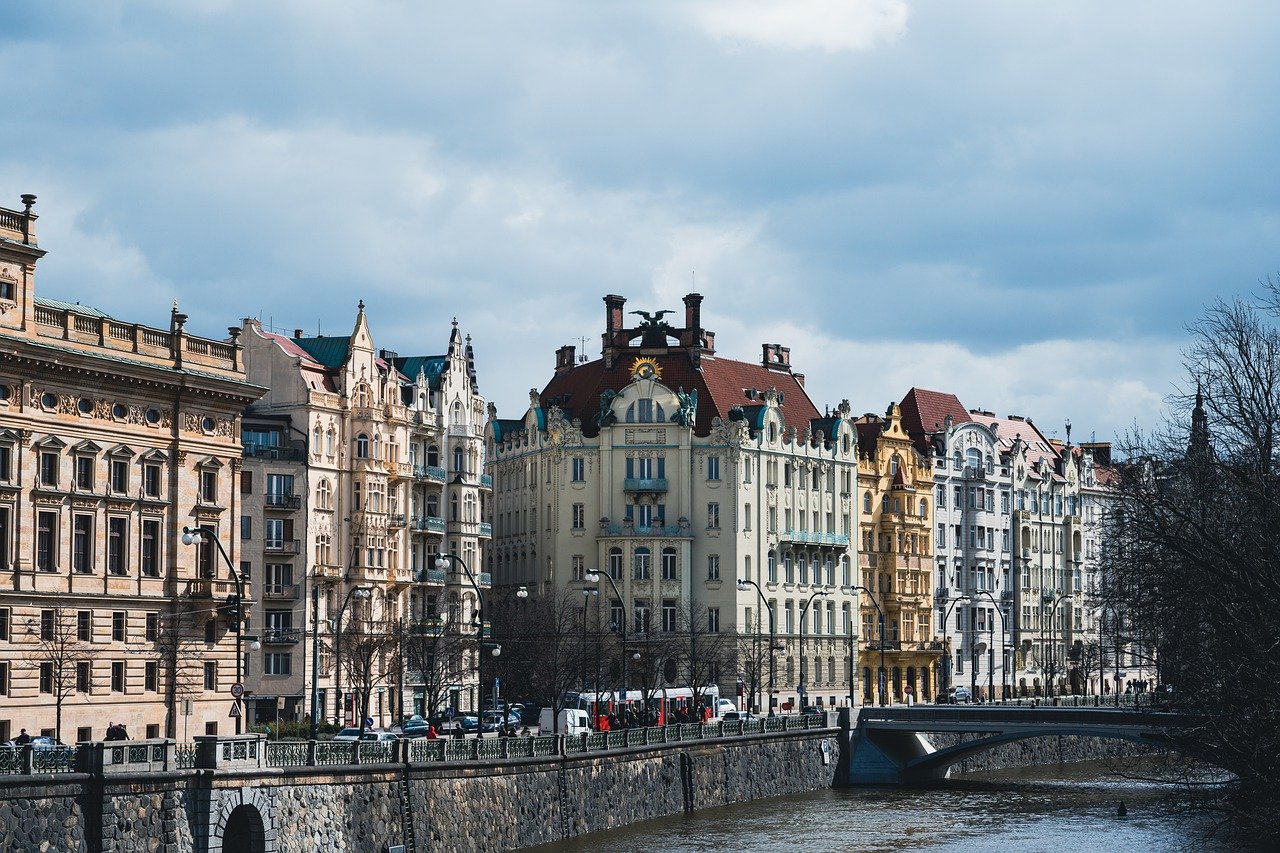
Water Management Solutions
In today's rapidly urbanizing world, effective have become a cornerstone of sustainable city planning. As cities expand, the demand for water increases, and with it, the challenges of managing this precious resource. Innovative approaches are essential for conserving water, preventing flooding, and ensuring a reliable supply for all residents. One of the most promising strategies is rainwater harvesting, which allows cities to collect and store rainwater for various uses, significantly reducing dependence on conventional water sources.
Imagine a city where every drop of rain counts! By implementing rainwater harvesting systems, urban areas can capture runoff from roofs and pavements, redirecting it to storage tanks. This not only alleviates the pressure on municipal water supplies but also reduces the risk of urban flooding during heavy rains. Additionally, cities can utilize this harvested water for irrigation, toilet flushing, and even cooling systems, thereby maximizing efficiency.
Another innovative solution gaining traction is smart irrigation. This technology leverages sensors and data analytics to optimize water usage in parks, gardens, and agricultural areas. By monitoring soil moisture levels and weather conditions, smart irrigation systems can deliver the right amount of water at the right time, minimizing waste. Picture a lush green park that thrives on just the right amount of water, conserving resources while providing a beautiful space for residents to enjoy.
Furthermore, cities are exploring the potential of greywater recycling. This involves treating and reusing wastewater from sinks, showers, and washing machines for non-potable purposes, such as irrigation or toilet flushing. By recycling greywater, cities can significantly reduce their overall water consumption and lessen the burden on wastewater treatment facilities.
To illustrate the impact of these solutions, consider the following table that highlights the benefits of various water management strategies:
| Water Management Strategy | Benefits |
|---|---|
| Rainwater Harvesting | Reduces reliance on municipal water, prevents flooding, and provides an alternative water source. |
| Smart Irrigation | Optimizes water usage, conserves resources, and promotes healthier landscapes. |
| Greywater Recycling | Reduces overall water consumption and promotes sustainable water use practices. |
As we look to the future, the integration of these water management solutions will be crucial for creating resilient and sustainable urban environments. Cities that embrace these technologies not only enhance their water efficiency but also contribute to a healthier ecosystem and improved quality of life for their residents. By prioritizing innovative water management strategies, urban planners can ensure that cities remain livable and sustainable for generations to come.
- What is rainwater harvesting? Rainwater harvesting is the process of collecting and storing rainwater for reuse, reducing reliance on traditional water sources.
- How does smart irrigation work? Smart irrigation uses sensors and data analytics to optimize water delivery based on real-time soil moisture and weather conditions.
- What is greywater recycling? Greywater recycling involves treating wastewater from household activities for non-potable uses, such as irrigation or toilet flushing.
- Why are water management solutions important for smart cities? Effective water management solutions help conserve resources, prevent flooding, and ensure a reliable water supply, contributing to overall urban sustainability.

Smart Mobility Solutions
In the bustling heart of modern cities, where every second counts and every inch of space is precious, are becoming the backbone of urban transportation. Imagine a city where traffic jams are a thing of the past, where you can effortlessly hop on an electric scooter or catch a self-driving shuttle to your destination. This is not just a dream; it’s the future we are heading towards.
At the core of smart mobility is the integration of technology into transportation systems. With the rise of electric vehicles (EVs), cities are seeing a shift towards greener alternatives that not only reduce carbon emissions but also lower noise pollution. These vehicles are equipped with advanced sensors and AI systems that optimize routes in real-time, ensuring that commuters spend less time on the road and more time enjoying life. In fact, studies show that cities implementing EVs can reduce their overall greenhouse gas emissions by up to 50%.
But it doesn’t stop there. Smart mobility solutions also encompass bike-sharing programs and efficient public transport systems. Picture this: you’re in a city where you can easily rent a bike with just a tap on your smartphone. These bike-sharing initiatives not only promote a healthier lifestyle but also significantly cut down on traffic congestion. According to recent statistics, cities with robust bike-sharing programs have seen a 30% increase in cycling rates, which translates to fewer cars on the road and a more vibrant urban atmosphere.
Moreover, public transport is evolving, too. With the implementation of real-time tracking systems, commuters can receive updates on bus and train arrivals directly on their devices. This not only enhances the user experience but also encourages more people to opt for public transportation over personal vehicles. In fact, cities that have adopted these technologies report a 20% increase in public transit ridership.
Another crucial aspect of smart mobility is the concept of mobility as a service (MaaS). This innovative approach combines various forms of transportation services into a single accessible platform. Users can plan their journeys, book rides, and pay for services all in one app. Imagine having the flexibility to switch between a bus, train, and bike without the hassle of multiple payments or apps. This seamless integration is not just convenient; it’s essential for creating a sustainable urban environment.
However, as we embrace these smart mobility solutions, we must also consider the challenges they bring. Infrastructure needs to be upgraded to support electric charging stations and bike lanes. Additionally, cities must ensure that these services are accessible to everyone, including those in underserved communities. After all, the goal of smart mobility is not just to create a more efficient transportation system, but to enhance the quality of life for all residents.
In summary, smart mobility solutions are paving the way for a more connected and sustainable urban future. By embracing innovative technologies and integrating various transportation methods, cities can reduce congestion, lower emissions, and improve the overall quality of life for their inhabitants. The road ahead is bright, and with the right investments and planning, we can transform our cities into smart, livable spaces.
- What are smart mobility solutions? Smart mobility solutions refer to the integration of technology into transportation systems to improve efficiency, reduce congestion, and promote sustainable practices.
- How do electric vehicles contribute to smart mobility? Electric vehicles reduce carbon emissions, lower noise pollution, and are equipped with technology that optimizes routes in real-time.
- What is mobility as a service (MaaS)? MaaS is an approach that combines various transportation services into a single accessible platform, allowing users to plan, book, and pay for their journeys seamlessly.
- How can cities ensure smart mobility is accessible to everyone? Cities must invest in infrastructure upgrades, ensuring services are available in underserved communities and that transportation options are affordable for all residents.

Data-Driven Urban Management
The concept of is revolutionizing the way cities operate and interact with their residents. Imagine a city that not only responds to your needs but anticipates them. This is the power of data analytics. By harnessing vast amounts of information collected from various sources—such as traffic sensors, public transport usage, and social media feedback—urban planners can make informed decisions that enhance the quality of life for everyone. It’s like having a city that can think and adapt in real-time, ensuring that services are not just reactive but also proactive.
One of the most significant advantages of data-driven management is the ability to identify and solve urban challenges before they escalate. For instance, by analyzing traffic patterns, cities can optimize traffic light timings to reduce congestion. Similarly, monitoring energy consumption can help in identifying areas where energy efficiency can be improved, ultimately leading to cost savings and a smaller carbon footprint. This approach not only improves operational efficiency but also fosters a sense of community by making urban life smoother and more enjoyable.
Moreover, the integration of real-time data analytics allows cities to enhance their services significantly. For example, public transportation systems can use data to predict peak travel times and adjust schedules accordingly. This results in less waiting time for commuters and a more pleasant travel experience. Additionally, cities can leverage data to improve waste management systems, ensuring that bins are emptied only when full, which saves on fuel and labor costs.
To illustrate the impact of data-driven urban management, consider the following table that highlights key areas where data analytics is making a difference:
| Area of Impact | Data Utilization | Benefits |
|---|---|---|
| Traffic Management | Real-time traffic data | Reduced congestion, improved travel times |
| Public Safety | Crime data analysis | Enhanced emergency response, reduced crime rates |
| Resource Allocation | Utility consumption data | Efficient resource management, cost savings |
However, while the benefits of data-driven urban management are vast, it’s essential to acknowledge the challenges that come with it. One of the primary concerns is ensuring that the data collected is used ethically and responsibly. As cities become more reliant on data, the potential for misuse or unauthorized access to personal information increases. Therefore, it’s crucial for city officials to implement robust data governance frameworks that prioritize privacy and security.
Furthermore, engaging citizens in this data-driven approach is vital. When residents understand how their data is being used and see tangible benefits, they are more likely to support these initiatives. Utilizing digital platforms to communicate with citizens can foster transparency and encourage participation in local governance. This collaborative approach not only builds trust but also ensures that urban services are tailored to meet the specific needs of communities.
In conclusion, data-driven urban management is not just a trend; it’s a necessary evolution for modern cities. By leveraging data analytics, cities can enhance efficiency, improve services, and create a more responsive urban environment. However, it’s essential to navigate the associated challenges with care, ensuring that privacy and security remain a top priority. As we look to the future, the role of data in shaping our urban landscapes will only continue to grow, promising a smarter, more connected world.
- What is data-driven urban management? - It refers to the use of data analytics to inform and enhance decision-making processes in urban planning and management.
- How does data-driven management improve city services? - By analyzing real-time data, cities can optimize services such as traffic flow, public transportation, and waste management, leading to greater efficiency and satisfaction.
- What are the privacy concerns associated with data collection? - The collection of personal data raises issues regarding unauthorized access and misuse, which necessitates strong data governance practices.
- How can citizens get involved in data-driven initiatives? - Cities can engage residents through digital platforms, encouraging feedback and participation in urban governance to ensure services meet community needs.

Citizen Engagement through Technology
In today's fast-paced world, engaging citizens in the decision-making processes of their cities has never been more critical. With the advent of technology, local governments are finding innovative ways to connect with residents, fostering a sense of community and participation. Imagine a city where your voice matters, where you can influence urban policies with just a few clicks. This is the promise of technology in citizen engagement, transforming passive residents into active participants in shaping their environment.
Digital platforms such as mobile applications and social media are at the forefront of this transformation. These tools allow city officials to communicate directly with citizens, disseminating information swiftly and efficiently. For instance, local governments can use apps to notify residents about upcoming town hall meetings, public safety alerts, or changes in city services. This real-time communication not only keeps residents informed but also encourages them to engage in discussions about local issues, creating a more vibrant civic life.
Moreover, technology enables the collection of valuable feedback from citizens. Through online surveys and interactive platforms, residents can express their opinions on various urban projects, from new park developments to public transportation improvements. This feedback loop is essential for ensuring that the services provided align with the actual needs and desires of the community. For example, a city might launch a survey asking residents to prioritize which neighborhood improvements they value most, thus directly involving them in the planning process.
Another exciting aspect of citizen engagement through technology is the rise of participatory budgeting. This innovative approach allows residents to allocate a portion of the city budget to projects they deem most important. By using online voting systems, citizens can weigh in on various proposals, such as building new playgrounds, improving public transportation, or enhancing local parks. This not only democratizes the budgeting process but also fosters a sense of ownership among residents, as they see their choices come to life.
However, while technology offers tremendous opportunities for engagement, it also comes with challenges. Not all citizens have equal access to digital tools, which can create disparities in participation. To combat this, cities must ensure that engagement platforms are accessible to everyone, including those who may not be tech-savvy or lack internet access. This could mean providing alternative ways to participate, such as in-person meetings or phone surveys, ensuring that all voices are heard.
In conclusion, citizen engagement through technology is reshaping how communities interact with their local governments. By leveraging digital tools, cities can create more inclusive, transparent, and responsive governance systems. The future of urban living hinges on this collaboration between citizens and their governments, where technology acts as a bridge, connecting people to the heart of their city.
- What is citizen engagement through technology?
Citizen engagement through technology refers to the use of digital platforms and tools to involve residents in the decision-making processes of their local governments. - How can technology improve citizen engagement?
Technology can improve citizen engagement by facilitating real-time communication, gathering feedback, and enabling participatory budgeting, allowing residents to have a say in local policies and projects. - What are the challenges of using technology for citizen engagement?
Challenges include ensuring equal access to digital tools, addressing the digital divide, and maintaining privacy and security of citizen data. - How can cities ensure inclusivity in citizen engagement?
Cities can ensure inclusivity by providing alternative participation methods, such as in-person meetings, and ensuring digital platforms are user-friendly and accessible to all.
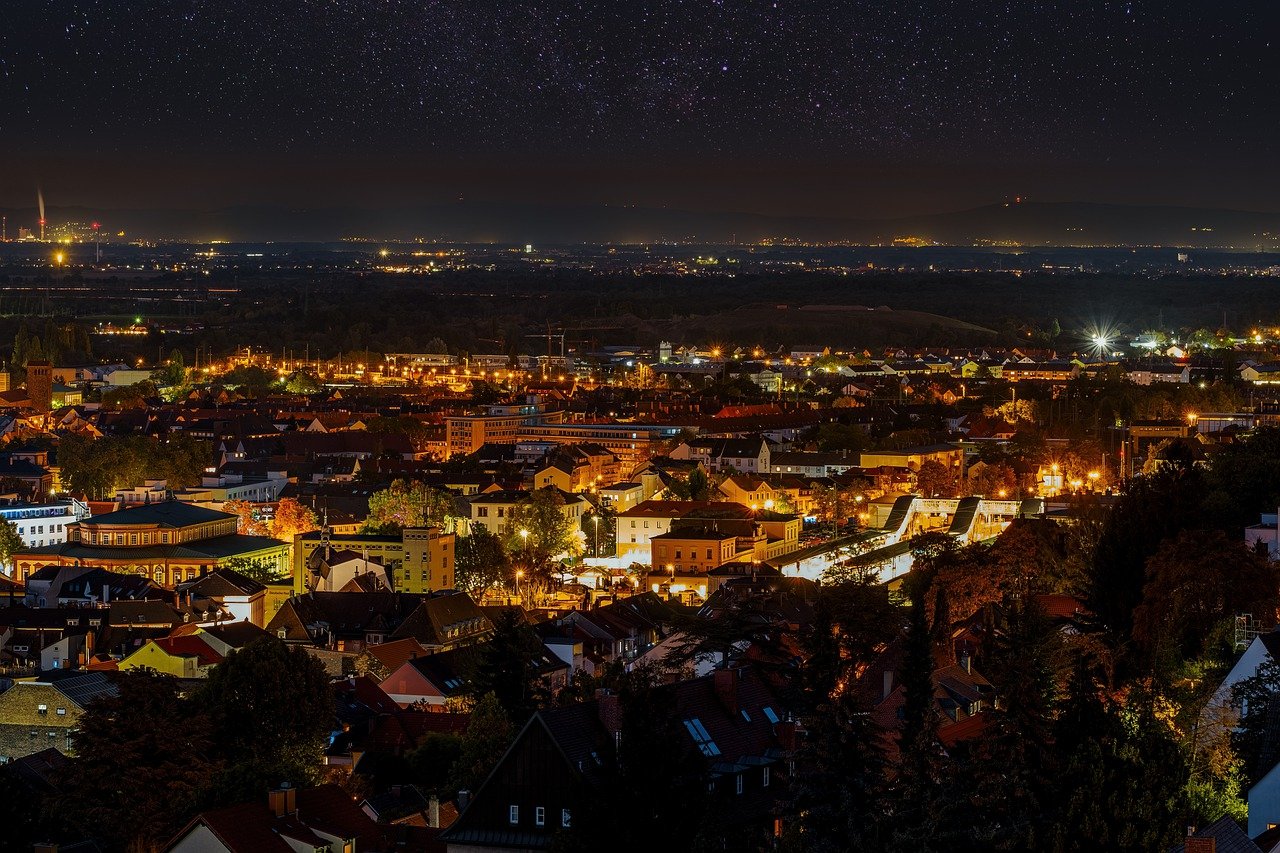
Privacy and Security Concerns
As we leap into the future of smart cities, one of the most pressing issues that arises is the question of privacy and security. With the integration of advanced technologies such as the Internet of Things (IoT), artificial intelligence (AI), and big data analytics, cities are becoming more interconnected than ever. While this connectivity brings about numerous benefits, it also raises significant concerns regarding the safety of personal data and the potential for misuse.
Imagine walking through a city where every move you make is tracked by sensors and cameras. On one hand, this data can help improve urban services, but on the other, it can lead to a feeling of being constantly watched. The balance between utilizing data for better city management and respecting individual privacy is a tightrope that city planners must navigate carefully. How can cities ensure that they are protecting their citizens' privacy while still reaping the benefits of smart technologies?
One of the main challenges is the vast amount of data collected from citizens. This data can include everything from traffic patterns to personal information gathered through apps that residents use to interact with city services. As cities become more reliant on this data, they must implement stringent measures to protect it. Failure to do so not only jeopardizes citizen trust but can also lead to severe legal repercussions.
To address these concerns, many cities are beginning to adopt data governance frameworks. These frameworks are designed to establish clear policies on data collection, usage, and storage. Here are some key components that should be included:
- Transparency: Cities must be open about what data is being collected and how it is being used.
- Consent: Residents should have the option to opt-in or opt-out of data collection initiatives.
- Security Measures: Implementing robust cybersecurity protocols to protect sensitive information.
- Accountability: Establishing clear lines of responsibility for data management and breaches.
Moreover, engaging with the community is essential in building trust. Cities should prioritize citizen engagement through digital platforms that allow residents to voice their concerns and provide feedback on data usage. This not only promotes transparency but also fosters a sense of ownership among citizens regarding their data.
However, even with the best frameworks in place, the risk of data breaches remains a constant threat. Cybersecurity incidents can lead to unauthorized access to personal information, resulting in identity theft, financial loss, and a general sense of insecurity among residents. Therefore, cities must continuously update their security measures and stay ahead of potential threats.
In conclusion, while the development of smart cities presents an exciting opportunity for urban growth and innovation, it is imperative that we address the that accompany this transformation. By implementing comprehensive data governance frameworks and engaging citizens in the conversation, cities can create a safer, smarter urban environment that respects individual privacy while harnessing the power of technology.
Q1: What are the main privacy concerns in smart cities?
A1: The main concerns include data collection without consent, potential misuse of personal information, and the risk of data breaches.
Q2: How can citizens protect their privacy in smart cities?
A2: Citizens can protect their privacy by being aware of what data is being collected, opting out of unnecessary data collection, and advocating for transparent data governance policies.
Q3: What role does technology play in ensuring privacy and security?
A3: Technology can enhance security through advanced encryption methods, secure data storage solutions, and robust cybersecurity protocols to protect sensitive information.
Frequently Asked Questions
- What are smart cities?
Smart cities are urban areas that leverage technology and data to improve the quality of life for residents. They focus on enhancing sustainability, connectivity, and efficient resource management while addressing urban challenges.
- How do emerging technologies contribute to smart city development?
Emerging technologies like the Internet of Things (IoT), artificial intelligence (AI), and big data play a crucial role in smart city development. They help optimize urban infrastructure, enhance service delivery, and provide real-time insights for better decision-making.
- What is the significance of sustainability in smart cities?
Sustainability is at the heart of smart city initiatives. It emphasizes eco-friendly practices, renewable energy sources, and efficient resource management to create livable environments that can thrive for future generations.
- How does urban agriculture fit into smart city planning?
Urban agriculture, including rooftop gardens and vertical farms, is essential for providing fresh produce, reducing food miles, and fostering community engagement. It contributes to a sustainable urban lifestyle by integrating food production within city environments.
- What are some examples of smart mobility solutions?
Smart mobility solutions encompass electric vehicles, bike-sharing programs, and efficient public transport systems. These initiatives aim to reduce traffic congestion, promote sustainable transportation, and improve overall urban mobility.
- How is data used in urban management?
Data analytics plays a pivotal role in urban management by enabling cities to respond proactively to challenges. It helps improve services through real-time insights, allowing for better resource allocation and enhanced decision-making processes.
- What role does citizen engagement play in smart cities?
Citizen engagement through digital platforms fosters transparency and encourages community participation in local governance. It helps tailor urban services to meet the specific needs of residents, creating a more inclusive urban environment.
- What are the privacy and security concerns in smart cities?
As cities become smarter, privacy and security concerns regarding data collection and surveillance become critical. Addressing these issues is essential to maintaining public trust and ensuring the safety of residents in a data-driven urban landscape.

